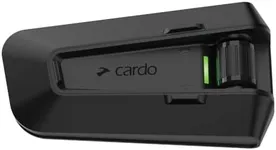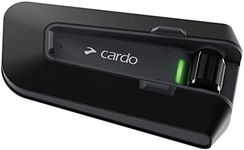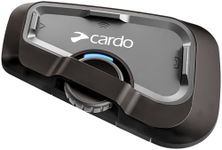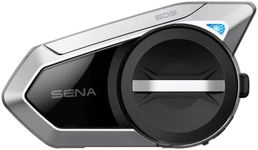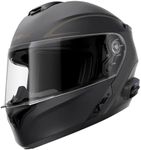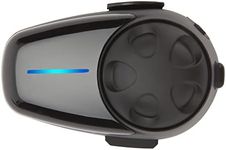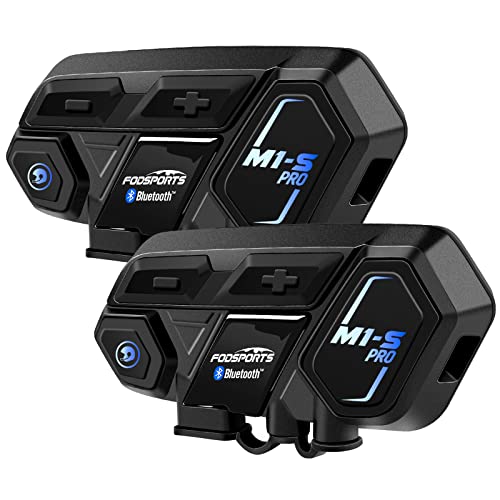Buying Guide for the Best Motorbike Intercoms
Choosing the right motorbike intercom can significantly enhance your riding experience by allowing you to communicate with fellow riders, listen to music, or receive GPS directions without distractions. To find the best fit for you, it's important to understand the key specifications and how they align with your needs. Here are the main specs to consider when selecting a motorbike intercom.RangeThe range of a motorbike intercom refers to the maximum distance over which it can maintain a clear connection with other intercoms. This is important because it determines how far apart you and your riding companions can be while still being able to communicate. Intercoms typically have ranges from a few hundred meters to several kilometers. If you often ride in a group or in areas with open terrain, a longer range is beneficial. For city riding or shorter distances, a shorter range may suffice.
Battery LifeBattery life indicates how long the intercom can operate on a single charge. This is crucial for ensuring that your intercom lasts throughout your rides without needing frequent recharges. Battery life can vary from a few hours to over 20 hours. If you go on long trips or use the intercom extensively, look for models with longer battery life. For shorter rides or occasional use, a shorter battery life may be acceptable.
Number of ConnectionsThis spec refers to how many other intercoms your device can connect to simultaneously. It's important for group rides where you need to communicate with multiple riders. Some intercoms support connections with just one other device, while others can connect to eight or more. If you ride in large groups, choose an intercom with a higher number of connections. For solo rides or riding with just one partner, fewer connections will be sufficient.
Audio QualityAudio quality determines how clear and understandable the sound is through the intercom. This is important for effective communication, especially at high speeds or in noisy environments. Look for intercoms with noise-cancellation features and high-definition speakers. If you prioritize clear communication and enjoy listening to music while riding, opt for models with superior audio quality. For basic communication needs, standard audio quality may be adequate.
Ease of UseEase of use refers to how simple and intuitive the intercom is to operate. This includes the design of the controls, the user interface, and the ease of installation. It's important because you need to be able to use the intercom safely while riding. Look for models with large, easily accessible buttons and clear instructions. If you prefer a hassle-free experience, choose an intercom known for its user-friendly design. For tech-savvy users, more advanced features might be appealing even if they come with a steeper learning curve.
CompatibilityCompatibility refers to how well the intercom works with other devices, such as smartphones, GPS units, and other intercom brands. This is important for ensuring seamless integration with your existing gear. Check if the intercom supports Bluetooth and if it can pair with devices you already own. If you use multiple gadgets while riding, choose an intercom with broad compatibility. For simpler setups, basic compatibility may be sufficient.
Water ResistanceWater resistance indicates how well the intercom can withstand exposure to water and moisture. This is crucial for ensuring the device remains functional in various weather conditions. Intercoms are rated with different levels of water resistance, from splash-proof to fully waterproof. If you often ride in rainy or wet conditions, opt for a higher water resistance rating. For fair-weather riders, lower water resistance may be acceptable.

